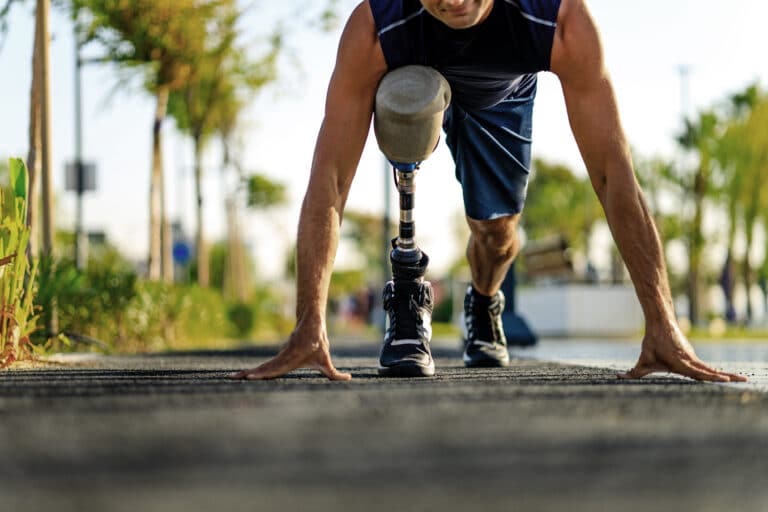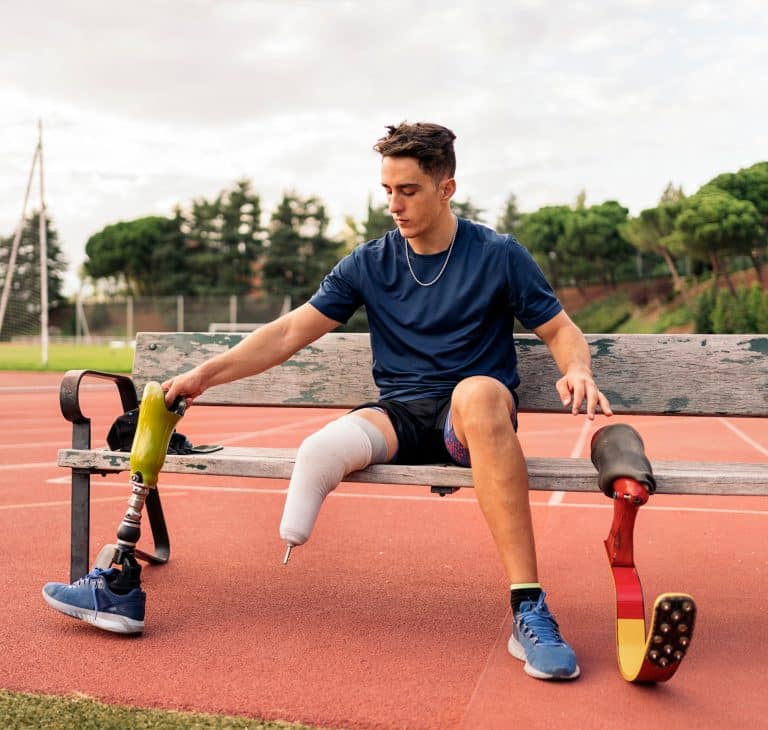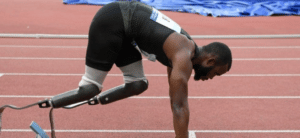Below The Knee Limb Loss

Below the Knee Prosthetics in Gross Pointe, MI
At Above and Beyond Orthopedics we know the loss of a limb can be life changing. Our below knee prostheses can help keep you mobile and get you back on track. We are a women-owned practice with skilled and experienced prosthetic and orthotic practitioners bringing services to the people of Metro-Detroit and beyond. The goal of Above and Beyond Orthopedics is not only to restore mobility and quality of life, but to help you reach your full potential and maximize your abilities.
What Are Below Knee Prosthesis?
Below-knee prosthetics, also known as transtibial prosthesis, are artificial limbs that are designed to replace a missing leg below the knee. They are typically used for people who have lost a leg due to injury, disease, or congenital conditions resulting in below knee amputation (also known as transtibial amputation). The main goal of below-knee prosthetics is to provide the individual with the ability to walk and perform daily activities as independently and comfortably as possible.
Below-knee prosthetics typically consist of three main components: a socket, a knee joint, and a foot or ankle component. The socket is the part of the prosthetic that fits over the residual limb and attaches to the rest of the prosthetic. It is typically made of a lightweight, durable material such as carbon fiber or plastic and is designed to be as comfortable as possible for the individual.
The knee joint is the part of the prosthetic that allows you to bend and straighten your leg. It is typically made of metal or plastic and may be a simple hinge joint or a more advanced microprocessor-controlled joint. The prosthetic foot or ankle component is the part of the prosthetic that mimics the function of the foot and ankle. It may be a simple foot that allows you to walk on flat surfaces or a more advanced foot that allows you to walk on uneven terrain and stairs.

Below Knee Prosthetic Procedure
The process of fitting and using a below-knee prosthetic typically begins with a consultation with our prosthetist, who is a trained healthcare professional that specializes in the design, fitting, and maintenance of prosthetic limbs.
During the consultation, our prosthetist will take measurements of your residual limb and take into account your specific needs and goals. They will then use these measurements to create a custom-fit socket for the you. Once the socket has been fabricated, our prosthetist will add the knee prostheses and foot or ankle component to the prosthetic and make any necessary adjustments to ensure a proper fit and function.


Different Types of Below Knee Prosthesis
There are several types of below-knee prosthetics available, each designed to meet the specific needs of the individual. For example, some individuals may require a prosthetic with a microprocessor-controlled knee joint that can automatically adjust the knee’s resistance based on the individual’s walking speed and terrain. Other individuals may require a prosthetic with a more advanced foot that allows them to walk on uneven terrain and stairs. Additionally, some individuals may prefer a prosthetic with a more cosmetically pleasing appearance, such as a prosthetic with a lifelike silicone cover.
It is important to note that using a below-knee prosthetic can take time to adjust to and may require ongoing adjustments and maintenance. However, with the help of a trained prosthetist and physical therapist, most individuals are able to learn how to walk and perform daily activities with their new prosthetic. Additionally, many advances in prosthetic technology have been made in recent years, making prosthetics more comfortable, functional, and lifelike than ever before.
We Go Above & Beyond for Our Patients
“At Above and Beyond, the staff is extremely knowledgeable. They truly go above and beyond to make you feel like a valued customer. YaVonne personally delivered my order and Pam always have a pleasant attitude when calling the establishment.”
– Sherita B.
Lower Limb Prosthetics FAQs
Below-knee prosthetics work by replacing a missing leg below the knee. They consist of three main components: a socket, a knee joint, and a foot or ankle component. The socket fits over the residual limb and attaches to the rest of the prosthetic. The knee joint allows the individual to bend and straighten their leg, while the foot or ankle component mimics the function of the foot and ankle.
The main goal of below-knee prosthetics is to provide the individual with the ability to walk and perform daily activities as independently and comfortably as possible.
The process of fitting and using a below-knee prosthetic typically begins with a consultation with a prosthetist, who will take measurements of the individual’s residual limb and take into account their specific needs and goals. They will then use these measurements to create a custom-fit socket for the individual. Once the socket has been fabricated, the prosthetist will add the knee joint and foot or ankle component to the prosthetic and make any necessary adjustments to ensure a proper fit and function. After the prosthetic has been fitted, the individual will typically go through a period of physical therapy to learn how to walk and perform other activities with their new prosthetic.
Yes, there are several types of below-knee prosthetics available, each designed to meet the specific needs of the individual. For example, some individuals may require a prosthetic with a microprocessor-controlled knee joint that can automatically adjust the knee’s resistance based on the individual’s walking speed and terrain.
Other individuals may require a prosthetic with a more advanced foot that allows them to walk on uneven terrain and stairs. Additionally, some individuals may prefer a prosthetic with a more cosmetically pleasing appearance, such as a prosthetic with a lifelike silicone cover.
It is important to note that using a below-knee prosthetic can take time to adjust to and may require ongoing adjustments and maintenance. However, with the help of a trained prosthetist and physical therapist, most individuals are able to learn how to walk and perform daily activities with their new prosthetic. Additionally, many advances in prosthetic technology have been made in recent years, making prosthetics more comfortable, functional, and lifelike than ever before.
Below Knee Prosthesis in Gross Pointe, MI
As a local, minority- and woman-owned business, Above & Beyond Orthopedics prides itself on matching every customer with the prosthetic device that serves them best, restoring as much functionality as they need to live whole. Serving Grosse Pointe, MI, and Metro Detroit, we can help you find the perfect upper extremity prosthetic solution so that you can get a grip on whatever you love in life.
To learn more about your prosthetic options, or to find a solution based on your needs and hobbies, schedule your free evaluation today! At Above and Beyond Orthopedics, we won’t rest until you have what you need to take hold of what you enjoy most.
